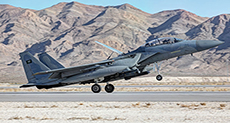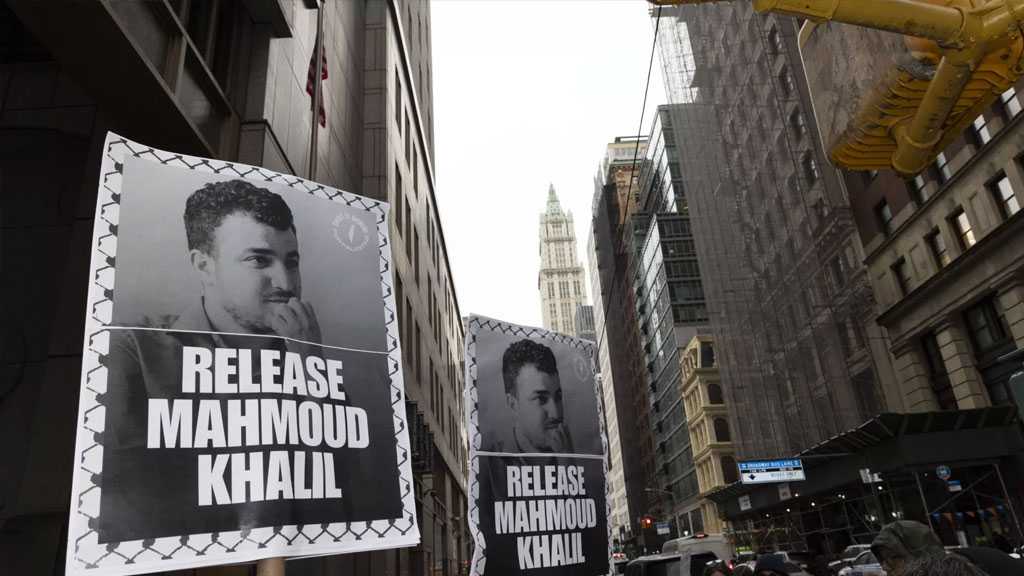Can Saudi Arabia Fight Two Wars at Once?

Frank Gardner
In the vast deserts of northern Saudi Arabia, close to the borders of Iraq and Kuwait, Exercise Northern Thunder has just concluded.

For nearly a month, the kingdom has been hosting forces from 20 allied nations, its first chance to practice integrating the Saudi-led "Islamic Coalition" announced last year to combat terrorism. This, say the Saudis, is the largest concentration of military forces in the region since the Desert Storm campaign of 1991 drove Iraq's army out of Kuwait.
Local media reports quoting figures of 350,000 troops looked to have been somewhat exaggerated.
There was little sign of massed formations of infantry and the Saudi general in charge declined to give me a total figure - "the numbers are not important" - suggesting that the actual turnout may have been lower than expected.
But the air force component was significant. At King Saud Airbase, near the town on Hafr Al-Batin, I watched squadrons of Egyptian, Jordanian and Bahraini F16 warplanes, along with Qatari Mirage jets, training alongside Saudi Typhoons and F15s.
Nearby, Kuwaiti artillery was dug in under camouflage netting, tanks from the UAE rumbled across a sandy valley while Saudi Apache helicopters hovered overhead.
"We are testing our infrastructures, our airports, our seaports, our airbases, to make sure we can host such a coalition," Brig Gen Ahmad al-Assiri, Saudi Arabia's chief military spokesman, told me, adding that forces of the "Islamic Coalition" need to be able to shift from fighting a conventional war to fighting a guerrilla insurgency.
Sense of encirclement
Many of the countries participating are already having to do just that, such as Mali with al-Qaeda in the north, and Pakistan coping with attacks by the Taliban.
But the country feeling most threatened of all is Saudi Arabia.
Its forces are fighting a war in Yemen on its southern border, while its air force is deployed to the north attacking Daesh in Syria, the group that has already carried out several bombings inside Saudi Arabia.
The Saudis are also starting to feel encircled by proxy of their arch rival, Iran, with Hizbullah in Lebanon and Syria, Shia groups in Iraq and the Houthi revolutionaries in Yemen.
So can Saudi Arabia fight on two fronts, in Yemen and in Syria? I put the question to Gen al-Assiri.
"I know it is exhausting in a matter of resources, in a matter of people," he says. "Today we face challenges in the south and our forces are stretched in the north and deployed since 2014. This is why - because we feel that our national security is in danger."
Air strikes criticism
This twin campaign has come at a difficult time for the world's second biggest oil producer.
Oil prices have dropped by more than 60% from their highs, resulting in budget shortfalls and a nationwide cutback in contracts and hiring.
The Yemen war is draining Saudi coffers at an alarming rate, but there is another factor the leadership in Riyadh must contend with: the mounting international opposition to its air strikes in Yemen, where an estimated 6,000 people have been killed by the past 12 months of war.
Air strikes have reportedly caused about half the fatalities, although the Saudis dispute this.
Whereas few people aside from Daesh and their supporters object to Saudi air strikes on the "jihadists" in Syria, the air strikes in Yemen are highly controversial.
In February, the European Parliament voted by a large majority for an EU-wide arms embargo on Saudi Arabia, blaming its air strikes for what it called the "disastrous humanitarian situation" in Yemen.
For the past 12 months, the US has been helping the Saudi-led campaign with refueling, satellite and other intelligence, while both the US and UK have sold both aircraft and high-precision missiles to Saudi Arabia.
According to the London-based Campaign against Arms Trade, the UK has licensed £2.8bn [$4bn] of arms to Saudi Arabia since the air strikes began there in March 2015.
"Thousands of Yemeni civilians have been killed and injured in devastating and indiscriminate Saudi coalition airstrikes," says Amnesty International, "and there's strong evidence that further weapons sales to Saudi Arabia are not just ill-advised but actually illegal."
The Saudis strongly reject this...
'No Strike List'
Stung by this international condemnation, the Saudis agreed to let me into their Air Operations Centre [AOC] inside the King Salman Airbase in Riyadh.
This is where Saudi intelligence officers, alongside their coalition partners, mostly from allied Arab countries, select their targets and generate the Air Tasking Orders [ATOs] to squadrons based around the country to carry out the air strikes.
In the Intelligence, Surveillance and Reconnaissance [ISR] cell, officers insisted that every single target was triple checked that it complied with International Humanitarian Law and the Law of Armed Conflict.
As part of what the Saudis call collateral damage mitigation [CDM], they told me they normally avoid hitting anything within 500m of civilians, an assertion likely to be challenged by Yemenis on the ground.
In some circumstances, said the Saudi officers, this safety margin is reduced to 200m when they use a high-precision laser-guided bomb.
They denied that their warplanes have ever deliberately targeted civilians, though they admitted there have been mistakes.
Upon the wall was a large digital map of Yemen with locations highlighted in green and red. This, I was told, is their No Strike List, a map of all the buildings they said are off-limits.
"The overall picture as you see on the map represents the theatre of operations," said Lt Col Turki al-Maliki, of the Royal Saudi Air Force.
Zooming into a close-up of the streets of the Yemeni capital, Sanaa, he added: "This gives the restriction of those targets which go along with the Law of Armed Conflict like the medical places, historical places, schools, diplomatic quarters."
I pointed out that, to quote just one example alone, the humanitarian aid group Medecins Sans Frontieres [MSF] complain their hospitals have been hit by air strikes three times in under three months.
Gen al-Assiri replied that world audiences have been deceived about the true situation in Yemen.
"No single accident happens without investigation," he told me. "And when we investigate, we publish the result.
We make sure that we have a very clear intelligence... We regret any single injury, but this is a war."
'Time needed'
When I interviewed Gen al-Assiri in Riyadh almost exactly a year ago, at the start of the Saudi-led air campaign, I sensed an expectation that the overwhelming firepower deployed against the Houthi revolutionaries would soon force them to sue for peace.
That has not happened, although a Houthi delegation did visit Riyadh this month.
The Saudis say they will not tolerate an armed force on their borders, especially one supported by Iran.
"We need time to achieve stability in Yemen," said Gen al-Assiri, pointing out that the US-led NATO force was in Afghanistan for 11 years and only achieved a partial success.
The question now is whether the Saudis have the money and the patience to be deeply involved in two coalitions on two fronts as the civilian casualty toll in Yemen grows ever higher.
Source: BBC, Edited by website team




